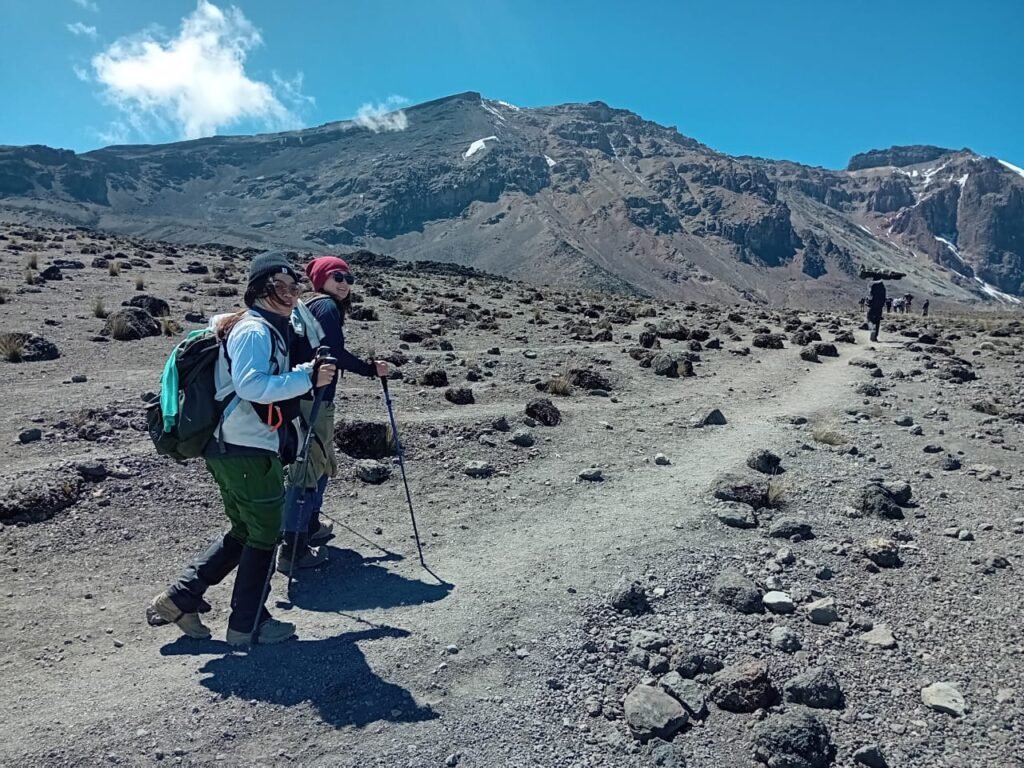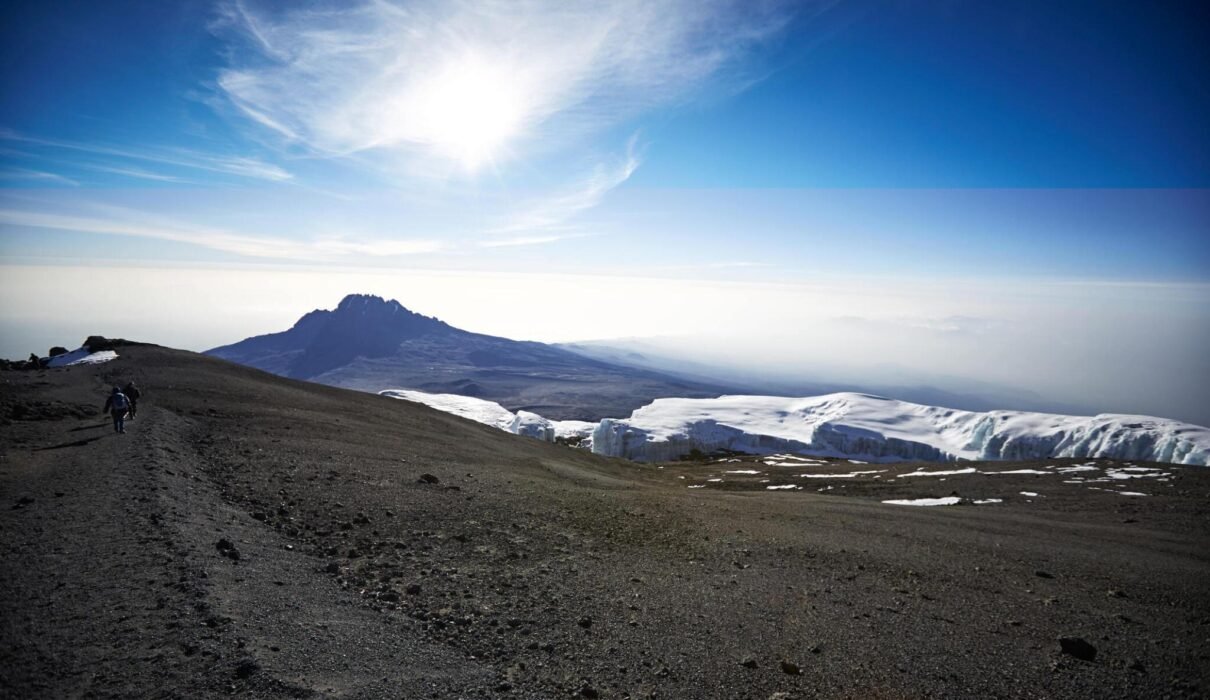Who Should Not Climb Kilimanjaro : Climbing Mount Kilimanjaro is a once-in-a-lifetime experience, but it’s not for everyone. The trek requires physical and mental preparation, and while it doesn’t involve technical climbing, it does challenge your endurance. Understanding who should not attempt this climb is important for safety. In this article, we’ll outline key factors like health risks, physical fitness, and age considerations to help you decide if Kilimanjaro is right for you
Explore more information on Kilimanjaro climbs here

Who Should Not Climb Kilimanjaro : Pre-Existing Health Conditions That Could Be a Risk
Kilimanjaro’s high altitude presents a serious challenge, particularly for individuals with certain medical conditions. If you suffer from heart disease, severe asthma, or respiratory issues, the trek may pose significant health risks. The reduced oxygen levels at high altitudes can worsen these conditions, leading to complications
Health Conditions to Be Aware Of:
- Heart Disease: The strain on the cardiovascular system at high altitudes can be dangerous.
- Chronic Respiratory Conditions: If you suffer from asthma or COPD, reduced oxygen levels can exacerbate breathing difficulties.
- Diabetes: Managing blood sugar levels becomes more difficult under strenuous physical activity and varying altitudes.
Learn more about trekking with medical conditions here
Who Should Not Climb Kilimanjaro : Lack of Physical Fitness
Kilimanjaro is not a technical climb, but it requires good physical endurance. Individuals who are not used to hiking or walking long distances may find the trek extremely difficult. If you are not physically fit, this trek could lead to exhaustion, injuries, or worse
Physical Fitness Requirements:
- Endurance: Climbers must be able to walk for 6-8 hours a day for up to 7 days.
- Strength: Leg strength is critical, especially for steep sections of the climb.
- Mental Resilience: Fatigue and high altitudes test not only your body but also your mental toughness
Check out training tips for Kilimanjaro here.
Who Should Not Climb Kilimanjaro : People Unprepared for Altitude Sickness
Altitude sickness (also known as acute mountain sickness or AMS) can affect anyone, but some are more susceptible than others. The thin air on Kilimanjaro can cause headaches, nausea, dizziness, and in severe cases, can lead to life-threatening conditions like High Altitude Pulmonary Edema (HAPE) or High Altitude Cerebral Edema (HACE)
Who Should Avoid Climbing Due to Altitude Sickness Risk:
- Previous History of Severe AMS: If you’ve experienced altitude sickness on previous climbs or treks, the risk is higher.
- Inability to Acclimatize: Some people simply do not adjust well to high altitudes, despite slow ascents and hydration
Learn more about altitude sickness prevention here.
Who Should Not Climb Kilimanjaro : Children Under 10 and Elderly Over 70
While Kilimanjaro is accessible to a wide range of ages, certain age groups may be more vulnerable to the harsh conditions. Children under 10 are generally not advised to climb due to their developing bodies and higher risk of altitude sickness. Similarly, adults over 70 may find the physical exertion too challenging unless they are in excellent health and physical shape
Age Considerations:
- Children: Young bodies may not acclimatize as effectively to higher altitudes.
- Seniors: If you’re over 70, it’s essential to get a full medical check-up before attempting the climb.
Read about Kilimanjaro’s age recommendations here.
Who Should Not Climb Kilimanjaro : People with Anxiety or Fear of Heights
If you suffer from severe anxiety or have a fear of heights, Kilimanjaro might not be the right adventure for you. The altitude, unpredictable weather, and exposure to heights on some of the steeper routes can trigger anxiety attacks or exacerbate pre-existing fears. Climbing Kilimanjaro requires mental calmness, especially when you encounter challenging conditions like steep cliffs and rocky terrain.
Mental Health Considerations:
- Anxiety: Long, high-altitude treks can increase stress levels.
- Fear of Heights: Some routes involve exposed ridges that may trigger vertigo or panic
Find out more about managing anxiety during hikes.
Who Should Not Climb Kilimanjaro : People Who Cannot Commit to Training
Climbing Kilimanjaro requires months of physical and mental preparation. If you’re unable to commit to a solid training plan, the trek will be significantly more difficult. Proper preparation helps prevent injuries and increases your chances of reaching the summit.
Training Requirements:
- Regular Hiking: Building your stamina through hikes is essential.
- Strength Training: Incorporating leg and core exercises can make a huge difference.
- Cardiovascular Fitness: Maintaining good heart health is key to handling the strain of higher altitudes.
Check out a complete training guide for Kilimanjaro here.
Who Should Not Climb Kilimanjaro : Pregnant Women Should Avoid the Climb
Pregnancy significantly changes the body’s ability to cope with physical stress, and the high altitude of Kilimanjaro can pose serious risks to both the mother and the unborn child. The reduced oxygen levels at high altitudes can lead to complications like preterm labor or restricted fetal growth.
Risks for Pregnant Women:
- Reduced Oxygen Supply: High altitudes decrease the amount of oxygen available, which can affect both mother and baby.
- Physical Strain: Pregnancy already puts significant strain on the body, and the physical demands of climbing can be overwhelming.
Learn more about travel and altitude risks during pregnancy.
Smokers or People with Lung Conditions
Climbing Kilimanjaro places enormous demands on your lungs, especially at higher altitudes where oxygen levels are low. Smokers and those with pre-existing lung conditions like emphysema or chronic bronchitis may find it particularly hard to breathe at these elevations.
Why Lung Health Matters:
- Lower Oxygen Levels: Smoking or lung conditions make it harder for your lungs to absorb the limited oxygen available.
- Increased Risk of Altitude Sickness: Compromised lung function increases the risk of altitude-related illnesses.
Discover how altitude affects lung function here.
Travelers Unprepared for Cold Weather
Temperatures on Kilimanjaro can drop significantly, especially at night and near the summit. If you’re not prepared for the cold with proper gear or are highly sensitive to cold conditions, the climb will be much harder. Hypothermia is a real risk if you’re not adequately dressed.
What You Need:
- Thermal Layers: Proper layering is crucial to maintaining warmth during the ascent.
- Insulated Jackets and Sleeping Bags: High-quality gear is a must to withstand the freezing temperatures at higher altitudes.
For packing tips and cold weather gear advice, visit this guide.
Those Who Dislike Camping or Long Treks
If you’re not a fan of outdoor camping or long, strenuous hikes, climbing Kilimanjaro may not be enjoyable. The trek takes anywhere from 5 to 9 days, and much of that time is spent camping in tents. Lack of comfort and the need for endurance can make the climb a tough experience for those who prefer luxury or shorter excursions.
Considerations:
- Camping: You’ll be spending multiple nights in tents with limited amenities.
- Long Trekking Days: You’ll need to walk for several hours each day on uneven terrain.
Get more information on the camping experience on Kilimanjaro.

Who Should Not Climb Kilimanjaro : Conclusion
While climbing Kilimanjaro is a thrilling adventure, it’s not for everyone. Those with pre-existing health conditions, individuals unable to commit to training, and those with altitude sensitivity or fear of heights should reconsider their plans. By understanding these limitations, you can make an informed decision and, if you’re ready, prepare properly for one of the greatest treks on earth.
For more detailed information and to plan your trek, visit Kilimanjaro Climb Specialist or Eddy Tours & Safaris.

